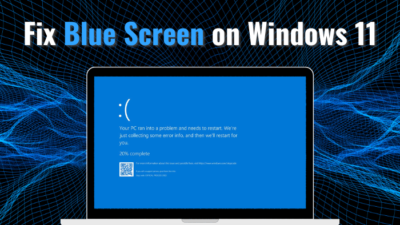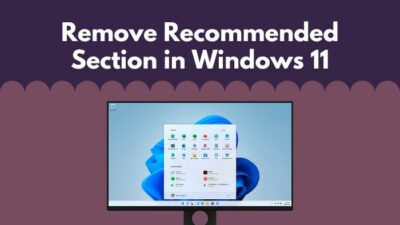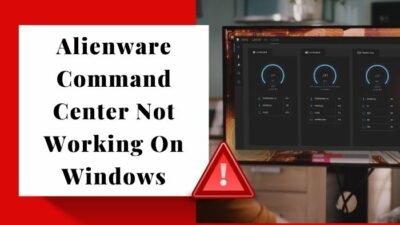It’s unfortunate to see your PC running slow due to the huge amount of RAM cache memory. The more apps you run, the more cache memory your PC will store.
Closing the apps may eventually free up the space, but some memories still remain.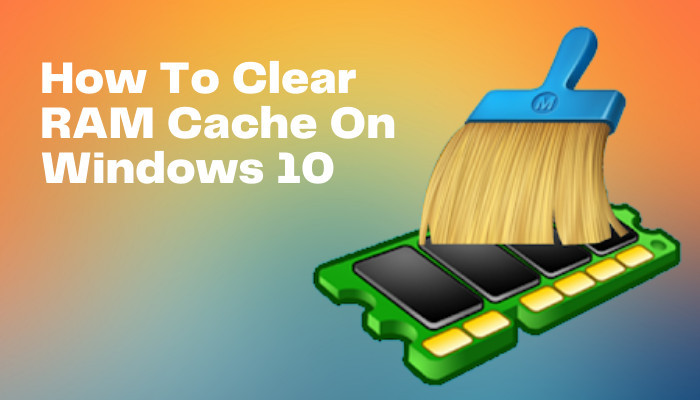
Are you also annoyed by the RAM cache issue? Looking for ways to clean up the junk cache memory? Well, I am here for you.
Working as a Beta-tester for Windows, I know some handy tricks that work effectively to free up your RAM cache. So read through the article carefully as I share my expertise to help you guys.
Let’s begin!
What Is RAM Cache Memory?
The RAM cache memory is a chip-based computer component that can make the data be retrieved from the computer’s memory more efficiently. You can find your computer’s cache memory details in the Memory section under the Performance tab of your PC Task Manager.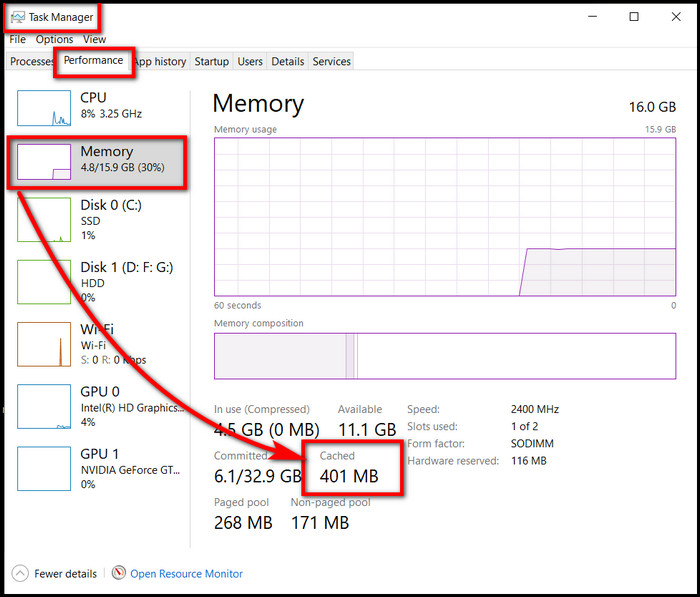
This memory usually operates at a very high speed, allowing the applications/ programs to respond faster. However, a lot of cached memory stacking is bad that eventually slows down your computer.
In such situations, the best practice is to clean up the RAM cache every once in a while. So, keep reading to learn how you can clear the RAM cache memory on Windows PC (10 & 11).
How to Clear RAM Cache on Windows 10/11
You can easily clear the RAM cache on Windows 10 or 11 by ending heavy tasks from the task manager and disabling unwanted startup programs. Additionally, you can reduce some visual effects and flush the RAM cache to reduce the memory cache on your PC.
The most basic step for resetting the RAM memory is rebooting your PC. When the computer restarts, it removes everything from memory and starts fresh. Thus, it completely clears your PC.
But what if you don’t want to restart your PC every now and then? What are the techniques to clean your RAM cache without restarting? Let’s find that out below.
Here are the methods to clear the RAM cache on Windows 10/11:
1. Go to Task Manager
The easiest solution is to close down memory-consuming processes from the Task Manager. Whether you are using Windows 10 or 11, running programs in the background can stack up a great deal of RAM cache. So, it’s better to end such tasks.
Here’s how you can clean RAM Cache from the Task Manager:
- Press Ctrl+Shift+Esc to open the Task Manager.
- Hit More details to access the full view.
- Move to the Processes tab.
- Click on the Memory header to sort programs from most to least RAM usage.
- Right-click the unwanted program that takes up huge RAM, and select End Task.
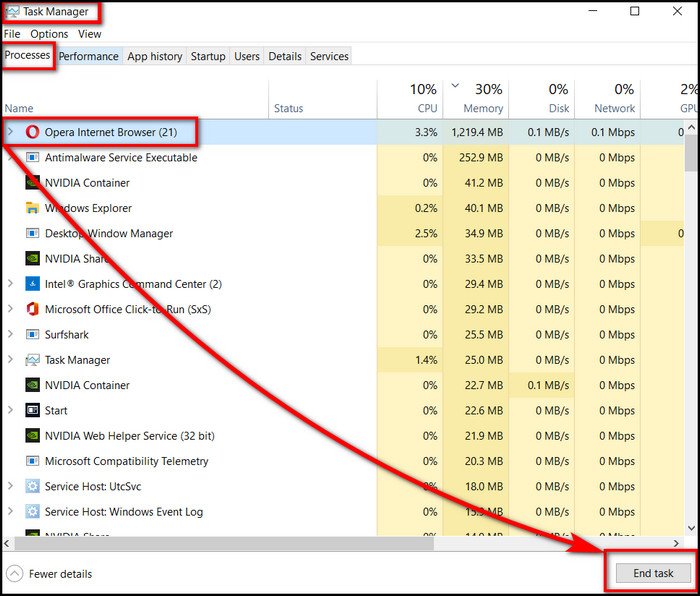
- Repeat the same process for other tasks.
Now, check the RAM cache to confirm how much cache memory is freed up.
Also, stop unnecessary background apps that are using your RAM for no reason.
2. Disable Startup Programs
Often many applications are configured to start functioning automatically with the bootup of your PC. If you have too many, the booting process will slow down, and you will always remain high on cache memory.
So, I recommend you disable some unnecessary startup programs.
Follow these steps to disable startup programs:
- Press Ctrl+Shift+Esc to open the Task Manager.
- Hit More details to access the full view.
- Switch to the Startup tab.
- Right-click on the programs you do not need that start with your PC
- Select the Disable option.
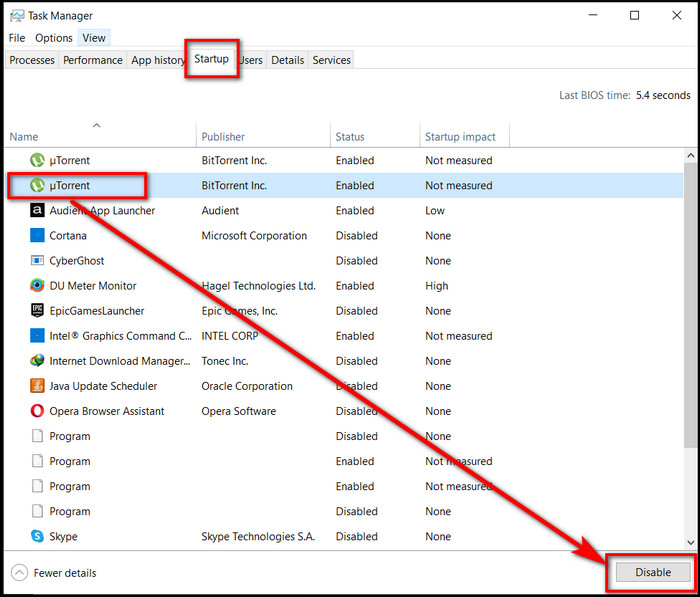
After that, you should get better results on RAM cache space. But if you are still not satisfied with the Cache memory, follow the next step for more improvements.
3. Turn off Unnecessary Visual Effects
As you know, Windows 10 and 11 come with lots of busy visual effects, which can take up much RAM memory.
These effects may affect your PC performance if you have a small RAM installed. So reducing the visual effects is a good option to reduce RAM cache memory.
Here’s how to disable Visual Effects on Windows 10:
- Press the Win+E keys to open the File Explorer.
- Right-click on this window and select Properties.
- Click on the Advanced system settings from the left side panel.
- Go to the Advanced tab.
- Select Settings under the Performance section.
- Mark the checkbox next to Adjust for the best performance.
- Hit Apply and then Ok.
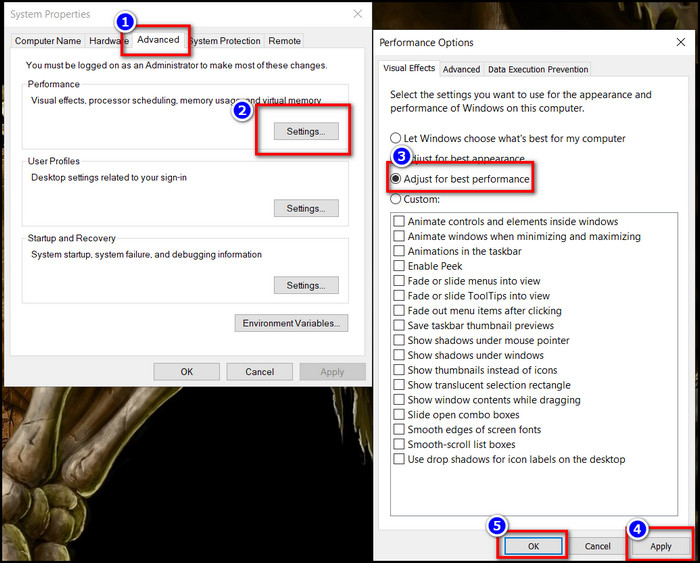
Once done, this will disable all the useless animated visual effects, and you will get less RAM cache on your system.
4. Clear Page File at Shutdown
The system RAM gets cleared once you shut down the computer, but the page file is still stored on the hard drive. So, clearing paging files can help clear the memory cache of Windows OS.
Here’s how to clear the page file automatically clear when shutting down:
- Press the Win+R keys to open the Run box.
- Then type regedit and hit Enter.
- Click on Yes to open Registry Editor.
- Go to the following registry key via the left navigation bar:
HKEY_LOCAL_MACHINE/SYSTEM/CurrentControlSet/Control/Session Manager/ Memory Management.
- Select the Memory Management folder in the left panel, and double-click the ClearPageFileAtShutdown DWORD.
- Set Value data to 1 and click on OK to save the changes.
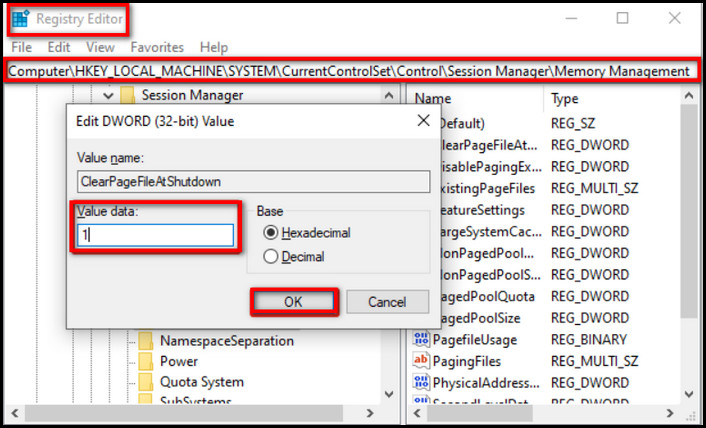
Now, every time you close your PC, all the paging files will be removed as well to free some RAM cache memory.
5. Create a Clear RAM Cache Shortcut
If you want like the hassle of going through these many options, you can create a custom RAM flushing shortcut button.
Follow these steps to create a Clear RAM cache shortcut:
- Go to your desktop and right-click on any empty space.
- Hover over the New option and select Shortcut.
- Type %windir%\system32\rundll32.exe advapi32.dll,ProcessIdleTasks In the pop-up window, and click on Next.
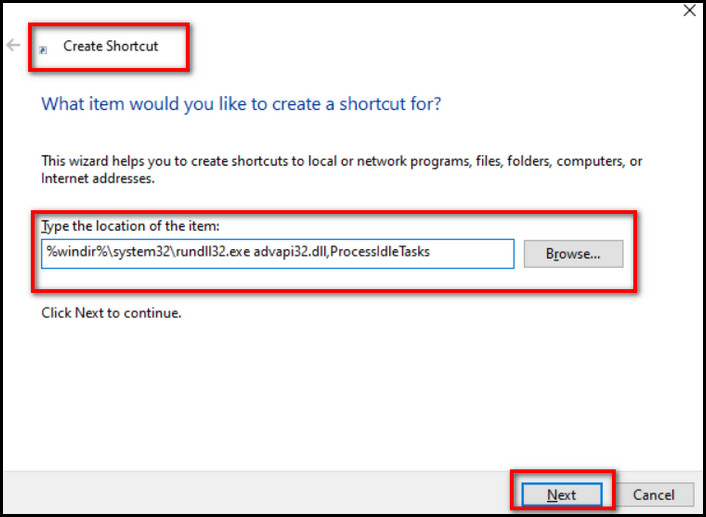
- Give a new name for the shortcut, such as Clear Memory Cache, and click on Finish.
After that, you can double-click the shortcut at any time you want to flush the memory cache.
The steps I’ve described above will free up some memory resources and increase the computer’s speed.
In case your system is also using too much processing power, simply follow our complete guide to clear the CPU cache and reduce stress.
FAQs
How do I free up RAM on Windows 11?
To free up the RAM cache on Windows 11, end unwanted RAM-hungry processes from the task manager and disable less used applications from the startup tab.
How to automatically clear ram cache memory in windows 10?
To set the automatic RAM cache-clearing process on Windows 10, download the Empty Standby List(ESL) tool and set it as a new task in the Task Scheduler application.
Is clearing the RAM cache good?
Yes, clearing the RAM cache is good. Cache memory occupies a huge amount of computer RAM and causes lots of problems. So, clearing the memory cache from your Windows computer is always recommended to get optimum performance.
Final Words
Clearing out RAM cache memory is the most effective way to boost the system’s performance.
Through this article, I am happy to share my years of Windows-using experience and ultimately help you clean up your RAM cache.
Let us know which method you found the most effective for your case in the comment section below.

